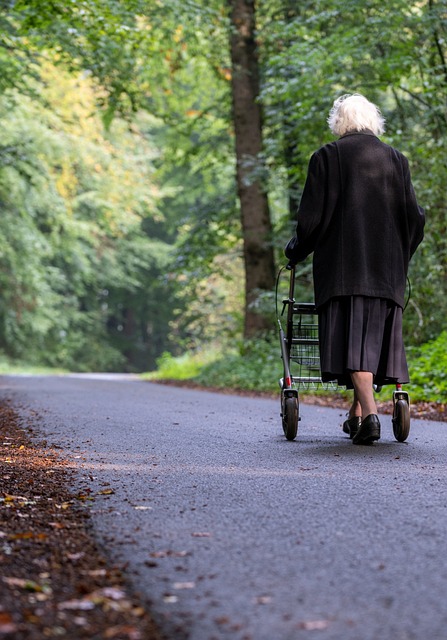Walkers Walking: The Ultimate Guide to Enhancing Maneuverability in Confined Areas

Note: This article is a comprehensive guide that aims to provide valuable insights and practical tips on enhancing maneuverability with walkers walking in confined areas. Whether you are a caregiver assisting someone with mobility challenges or an individual seeking ways to improve your own maneuverability, this guide will equip you with the knowledge and tools to navigate tight spaces with ease.
- The Importance of Maneuverability in Walkers
- Understanding the Limitations of Traditional Walkers
- Walkers Walking: Factors to Consider When Choosing a Walker for Confined Areas
- Features to Look for in a Walker for Enhanced Maneuverability
- Tips for Using a Walker in Confined Spaces
- Exercises to Improve Balance and Maneuverability While Using a Walker
- Innovative Walker Designs for Navigating Tight Spaces
- Conclusion and Final Thoughts on Enhancing Maneuverability with Walkers
The Importance of Maneuverability in Walkers
When it comes to mobility aids, maneuverability is paramount. For individuals who rely on walkers to navigate their daily lives, the ability to move freely and comfortably in confined areas is essential. Maneuverability not only enhances independence but also promotes safety and reduces the risk of accidents.
Traditional walkers, while effective in providing stability and support, often have limitations when it comes to maneuverability. These walkers typically feature a wide frame and require ample space to turn and navigate corners. This can be challenging in confined areas such as narrow hallways, small bathrooms, or crowded rooms. Understanding these limitations is crucial in identifying the right walker that can enhance maneuverability in such spaces.
Understanding the Limitations of Traditional Walkers
Traditional walkers, also known as standard walkers, have a simple yet sturdy design. They consist of a frame with four legs and handles for support. While these walkers provide excellent stability, their wide frame can pose difficulties in navigating tight spaces. The fixed wheels or glides on the legs of standard walkers restrict their maneuverability, making it challenging to make sharp turns or move smoothly in confined areas.
Furthermore, traditional walkers can be cumbersome to transport due to their size and weight. This can limit their usability outside the home, where maneuverability is equally important. To overcome these limitations, it is crucial to explore alternative walker designs that prioritize enhanced maneuverability without compromising on stability and support.
Walkers Walking: Factors to Consider When Choosing a Walker for Confined Areas
When selecting a walker for use in confined areas, it is essential to consider several factors to ensure optimal maneuverability. Firstly, the size and dimensions of the walker should be appropriate for the space it will be used in. Look for walkers with a narrower frame or foldable designs that can fit through tight doorways and navigate narrow hallways effortlessly.
Secondly, the weight of the walker is another crucial consideration. Opt for lightweight materials such as aluminum, which offer durability without adding unnecessary bulk. A lightweight walker is easier to maneuver and transport, making it ideal for confined spaces and on-the-go use.
Additionally, adjustable heights and handle grips are essential features to look for in a walker. These allow for customization to suit individual needs and preferences, ensuring optimal comfort and control. Easy-to-operate brakes or locking mechanisms are also important for added safety and stability when using the walker in confined areas.
Features to Look for in a Walker for Enhanced Maneuverability
To enhance maneuverability in confined areas, there are specific features to look for when choosing a walker. One such feature is swivel wheels. Unlike traditional fixed wheels, swivel wheels allow for greater mobility and smoother turns. These wheels can rotate in any direction, making it easier to navigate corners and tight spaces effortlessly.
Another feature to consider is a narrow frame or foldable design. Walkers with narrower frames are designed to fit through standard doorways and navigate narrow spaces more effectively. Foldable walkers are particularly useful for individuals who need to transport their walker frequently or have limited storage space. These walkers can be folded and unfolded easily, making them highly versatile and convenient.
Furthermore, walkers equipped with adjustable handles or grips offer added flexibility. Adjustable handles allow individuals to customize the height and angle of their grip, ensuring optimal comfort and control. This feature is especially beneficial for individuals with specific hand or wrist conditions that require a particular grip position.
Tips for Using a Walker in Confined Spaces
Using walkers walking in confined spaces can be challenging, but with the right techniques, it can become easier and safer. Here are some tips to help you navigate tight spaces with your walker:
- Take small steps: When maneuvering in confined areas, take small, deliberate steps to maintain balance and control. This approach allows you to make precise movements and avoid bumping into objects or walls.
- Pivot with caution: When turning corners, use your feet to pivot instead of relying solely on the walker. This technique allows for sharper turns and greater maneuverability. Ensure that the walker remains stable during the pivot by maintaining a firm grip on the handles.
- Clear the path: Before moving through a confined space, clear any obstacles or clutter that might hinder your progress. By creating a clear path, you can navigate more easily and avoid potential accidents or falls.
- Utilize handrails and grab bars: In areas where handrails or grab bars are available, make use of them for additional support and stability. These fixtures can provide extra confidence when maneuvering in confined spaces.
- Practice in a controlled environment: If you are new to using walkers walking or need to improve your maneuverability skills, consider practicing in a controlled environment. This could be an open area with obstacles or a designated practice space. Regular practice can help build confidence and improve your ability to navigate confined areas effectively.
Exercises to Improve Balance and Maneuverability While Using a Walker
Maintaining balance and improving maneuverability are crucial for individuals using walkers. Here are some exercises that can help enhance these skills:
- Weight shifting: Stand with your feet shoulder-width apart and gently shift your weight from one foot to the other. This exercise helps improve balance and stability while using a walker.
- Mini squats: Stand behind your walker, holding onto the handles. Slowly bend your knees into a mini squat position, ensuring that your knees are in line with your toes. This exercise strengthens the lower body and improves stability.
- Heel-to-toe walking: Practice walking in a straight line, placing your heel directly in front of the toes of your other foot with each step. This exercise promotes balance and coordination while simulating the challenges of maneuvering in confined spaces.
- Sidestepping: Stand alongside your walker and take small steps to the side, leading with one foot. Alternate sides to strengthen the muscles used for lateral movements and improve maneuverability.
- Obstacle course: Create a small obstacle course using everyday objects such as cones, pillows, or books. Practice navigating through the course with your walker, incorporating turns and tight spaces. This exercise helps simulate real-life situations and enhances your ability to maneuver effectively.
Innovative Walker Designs for Navigating Tight Spaces
Innovation in walker design has led to the development of specialized walkers that excel in maneuverability, particularly in confined areas. These innovative designs incorporate features such as:
- Three-wheeled walkers: Unlike traditional four-legged walkers, three-wheeled walkers offer improved maneuverability due to their triangular frame. These walkers are highly agile and can navigate tight spaces with ease.
- Rollators: Rollators combine the stability of a walker with the added versatility of wheels. These walkers feature four wheels, allowing for smoother movements and easier navigation in confined areas.
- Upright walkers: Upright walkers are designed with a unique frame that allows individuals to stand upright while using the walker. This design provides better visibility and maneuverability in confined spaces, as the user’s weight is centered over the walker.
- Compact folding walkers: Compact folding walkers are ideal for individuals who need to transport their walker frequently. These walkers can be easily folded into a compact size, making them highly portable and convenient for use in confined areas.
Conclusion and Final Thoughts on Enhancing Maneuverability with Walkers
Enhancing maneuverability with walkers in confined areas is crucial for individuals seeking to maintain their independence and safety. Understanding the limitations of traditional walkers and exploring innovative designs can significantly improve mobility and ease of navigation.
By considering factors such as size, weight, adjustable features, and swivel wheels, individuals can choose a walker that suits their specific needs and enhances maneuverability in confined spaces. Additionally, practicing techniques and exercises to improve balance and control while using a walker further enhances maneuverability skills.
Remember, the right walker and proper techniques can make a significant difference in your ability to navigate tight spaces with ease. By implementing the tips and techniques outlined in this guide, individuals can confidently navigate confined areas and maintain a sense of independence and freedom.
See also: How to Choose the Right Mobility Aid (Performance Health)

